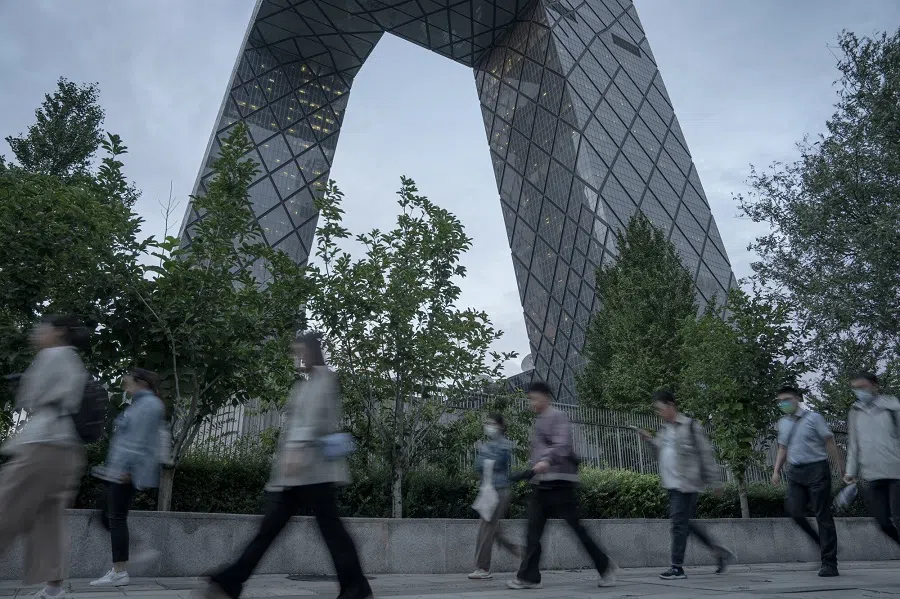Can China’s latest stimulus package save its economy?
Lianhe Zaobao journalist Li Kang speaks with academics to find out whether the new monetary policy measures are enough to bring China’s economy back on the road to recovery.

On 24 September, in order to address the economic growth slowdown stemming from dwindling confidence, China’s central bank implemented comprehensive measures to ease its monetary policy, covering financial credit, the housing market and stock market, leading to a broad rally in mainland China and Hong Kong stocks.
Academics interviewed believe that while the government has done half the job in reversing the economic downturn, fiscal policy is needed for the other half to restore confidence.
More liquidity
China’s three major financial regulatory bodies held a rare joint press conference on 24 September, where People’s Bank of China (PBOC) governor Pan Gongsheng announced a raft of economic stimulus policies, including cutting the interest rate on existing mortgages by 0.5 percentage points; lowering the minimum down-payment ratio for second home purchases from 25% to 15%; and increasing the central bank’s funding support ratio for the refinancing programme for affordable housing from 60% to 100%.

In terms of monetary policy, the PBOC will cut key policy interest rates and reduce the reserve requirement ratio, the amount of reserves lenders must hold, by 0.5 percentage points — the lowest level since 2020. This would add about 1 trillion RMB (US$142 billion) in long-term liquidity to the financial market.
This is also the first time in ten years that the PBOC has reduced interest rates and requirements on the same day.
The PBOC has also introduced two new monetary policy tools to inject at least 800 billion RMB in liquidity support into the stock market.
Reversing downward spiral
These supportive policies sparked a sharp rally in China’s stock market, with the Shanghai Composite Index surpassing 2,800 points on 24 September, its largest single-day gain in over four years. The Hong Kong Hang Seng Index also broke 19,000 points for the first time in nearly four months.
“... this round of policies has injected liquidity into the financial market and increased funding support for affordable housing, giving the market hope that official measures could help reverse the downward spiral.” — Tommy Xie, Head of research for the Greater China region, OCBC Bank

Chen Bo, a Chinese economist and adjunct professor at Liaoning University, told Lianhe Zaobao this is one of the most significant monetary policy easing implemented by the Chinese government in the past three years, and it is also a rare sight to have three financial regulatory departments working together.
A week before the joint press conference, Chinese officials gradually released economic data for August, in which several indicators including industrial production, consumption and youth employment fell short of expectations, raising external concerns about China’s economy.
Several major international investment banks subsequently lowered their annual growth forecasts for China to below 5%, lower than the Chinese government’s growth target.
Tommy Xie, head of research for the Greater China region at OCBC Bank, said when interviewed that China’s current round of official stimulus policies has exceeded expectations, with several measures poised to reverse the downward spiral.
... the core issues facing businesses stem from the fiscal and political environment, which cannot be left to the financial regulator and monetary policy alone, but requires the intervention of other departments as well. — Xie

Xie analysed that measures such as cutting interest rate cuts, reserve requirement ratios and existing mortgage rates have had limited impact in the past, and primarily served to “prevent the economy from declining too sharply”. However, this round of policies has injected liquidity into the financial market and increased funding support for affordable housing, giving the market hope that official measures could help reverse the downward spiral.
Fiscal policy still needed
However, Xie pointed out that the root of China’s economic woes lies in weak consumer confidence, the reluctance to invest and insufficient local government funds. Yet, the current policies introduced only “addressed half of the issues”, and did not respond to the problems faced by businesses at all.
He said that the core issues facing businesses stem from the fiscal and political environment, which cannot be left to the financial regulator and monetary policy alone, but requires the intervention of other departments as well.
... “it is not the inability to borrow money but the lack of appealing investment targets and a general lack of investor enthusiasm”. — Chen Bo, Economist, Liaoning University

Liaoning University’s Chen Bo also believes that relying on monetary policy alone may not yield immediate results, and that the main problem facing the Chinese market right now is not liquidity — “it is not the inability to borrow money but the lack of appealing investment targets and a general lack of investor enthusiasm”.
Chen further explained that when enterprises make investment decisions, they first consider costs, then look at returns. While the government’s easing of the monetary policy can help lower costs, the main issue still lies on the returns side.
He said that what the central bank can do now is improve the supply side. But it remains to be seen how effective monetary policy is for the overall recovery of the macroeconomy. “We’re still waiting — perhaps what’s needed is a direct stimulus to the demand side, which is fiscal policy,” he said.
This article was first published in Lianhe Zaobao as “中国加码货币宽松提振经济 学者肯定政策为扭转经济螺旋式下滑做了一半”.



![[Big read] China’s 10 trillion RMB debt clean-up falls short](https://cassette.sphdigital.com.sg/image/thinkchina/d08cfc72b13782693c25f2fcbf886fa7673723efca260881e7086211b082e66c)

